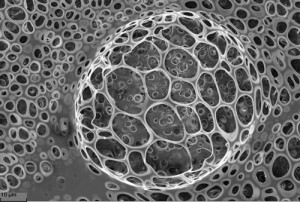Happy St. Patrick’s Day on March 17, 2015! Researchers, building on an earlier collaborative effort (FOCUS), have announced a new US-Ireland initiative, from a March 9, 2015 news item on Nanowerk,
A three-year US-Ireland collaborative scientific project aims to reduce power consumption and increase battery life in mobile devices. Researchers will explore new semiconducting materials in the miniaturisation of transistors which are essential to all portable devices.
Leading researchers from the Republic of Ireland (Tyndall National Institute & Dublin City University), Northern Ireland (Queens University Belfast) and the US (University of Texas at Dallas) – each funded by their respective government agencies – are collaborating to develop ultra-efficient electronic materials through the UNITE project: Understanding the Nature of Interfaces in Two-Dimensional Electronic Devices.
A March 9, 2015 (?) Tyndall National Institute press release, which originated the news item, details the project, the researchers, and the hoped for applications,
UNITE will create and test the properties of atomically-thin, 2-dimensional layers of semiconductors called, Transition Metal Dichalcogenides or TMD’s for short. These layers are 100,000 times smaller than the smallest thing the human eye can see. The properties these materials have displayed to date suggest that they could facilitate extremely efficient power usage and high performance computing.
Tyndall’s lead researcher Dr. Paul Hurley explains that, “materials that we are currently reliant on, such as silicon, are soon expected to reach the limit of their performance. If we want to continue to increase performance, while maintaining or even reducing power consumption, it is important to explore these new TMD materials.”
The application of these materials in transistors could prolong the battery charge life of portable devices and phones, as well as having applications in larger more power intensive operations like data storage and server centres. This will have obvious environmental benefits through the reduction of electrical energy consumed by information and communication technologies as well as benefitting consumers.
UNITE builds on a previous highly successful US-Ireland collaborative project between these academic research partners called FOCUS. The success of this project played a role in demonstrating why funders should back the new project, including training for five graduate students in the USA and Ireland, as well as student exchanges between the Institutes, which will provide a broader scientific and cultural experience for the graduates involved.
The press release goes on to describe FOCUS, the researchers’ prior collaborative project,
UNITE builds on a previous highly successful US-Ireland collaborative project between these academic research partners called FOCUS. The success of this project played a role in demonstrating why funders should back the new project, including training for five graduate students in the USA and Ireland, as well as student exchanges between the Institutes, which will provide a broader scientific and cultural experience for the graduates involved.
A March 13, 2015 (?) Tyndall National Institute press release describes both an event to celebrate the success enjoyed by FOCUS and gives specifics about the achievements,
FOCUS, a US-Ireland collaborative project will be presented as a research success highlight to An Taoiseach Enda Kenny on St. Patrick’s Day along with industry and academic leaders, at a Science Foundation Ireland (SFI) event in Washington DC. The event is to celebrate the SFI St. Patrick’s Day Science Medal Award and is an important occasion on the St. Patrick’s Day schedule in the USA.
Funded under the US-Ireland R&D Partnership Programme, FOCUS (Future Oxides and Channel Materials for Ultimate Scaling) linked researchers in Tyndall National Institute (Dr Paul Hurley), Dublin City University (Prof. Greg Hughes), Queen’s University Belfast (Dr David McNeill) and the University of Texas at Dallas (Prof. Robert Wallace).
Billions of silicon-based transistors are crammed onto a single chip and used in billions of electronic devices around the world such as computers, laptops and mobile phones. The FOCUS project group investigated if it was possible to use alternative materials to silicon in the active channels of transistors to improve their energy efficiency and battery life.
The consortium explored using Germanium and Indium-Gallium-Arsenide in combination with high dielectric constant oxides as a viable alternative to silicon. Their research was able to improve the electronic properties of these alternative semiconductor/oxide interfaces to the level needed for practical device applications and the outcomes of their research have now moved to industry for practical application.
The key achievements from the project include:
- Strong collaboration with Intel USA and Intel Ireland resulting in Paul Hurley receiving the Intel Outstanding Researcher Award in 2012
- Presentation of the project findings at the annual Intel European Research and Innovation Conference
- 3 Postdocs trained and 5 PhDs awarded in areas of strong interest to semiconductor manufacturers
- 35 journal papers published
- 2011 article on InGaAs surface treatment optimisation listed as one of the top 10 most cited articles in the Journal of Applied Physics in 2012
- 10 invited presentations at key scientific conferences
- University research partnership established between Tyndall National Institute and University of Texas at Dallas
- Project highlighted in Irish press, The Times of India and The Irish Voice
- Visit by the Consul General of Ireland to University of Texas at Dallas
- Numerous students and staff exchanges between all partner institutions
Good luck to the UNITE project!
